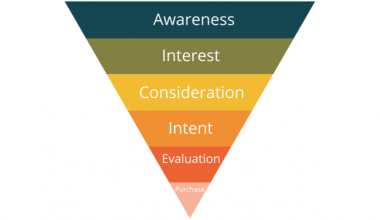Have you ever been so attached to a brand that consuming their product or service made you feel like the person you want to be? That’s effective brand storytelling. Brand storytelling can greatly increase brand consideration, making it an essential component of any marketing plan. Let’s look at why brand storytelling is so important, see some examples of effective practices, and brainstorm some ideas for getting started.
What is Brand Storytelling?
Brand storytelling is the process of developing a succession of plot points to establish an emotional connection between a brand and its intended audience.
A brand story is a concise description of your company’s history, mission, purpose, and values presented in a narrative format.
Is there a Distinction Between Content Marketing and Brand Storytelling?
Although not all content marketing is brand storytelling, it can help tell them.
Content marketing entails developing educational or promotional content to entice new customers, engage existing ones, and boost brand loyalty. It is only one medium for telling your brand’s narrative.
Storytelling tools and techniques are used to create branded content that communicates your company’s values and goals while eliciting an emotional response.
Elements of Powerful Brand Storytelling
Here are some of the critical factors for creating a brand story that sticks:
- Empathy: Ensure that your target audience can identify with your brand’s story.
- Attention-grabbing: Create and keep a distinct voice and personality when marketing your brand story. By remaining consistent, your material will be easily recognizable.
- Authentic: Be open about your ideals, your company’s distinguishing characteristics, and the obstacles you confront.
- Relatable: Avoid using industry-specific or technical jargon, and demonstrate that you understand your consumers and the issues they encounter.
- Consistency: Your audience should understand what to expect from you while also looking forward to what comes next.
- Aligned with business goals: Your brand story should be consistent with your company’s goals and incorporated into all aspects of your operations, including marketing, sales, and internal and external communications.
- Provoke action: Find a point in your story—as Compare the Market did with Aleksandr—to include a call to action and encourage the audience to become consumers.
Step-by-Step Guide for Effective Brand Storytelling
Crafting a great brand story is more than simply the words you employ; it’s about understanding your target audience, articulating your essential message, and presenting it in a way that resonates deeply. When we first started implementing storytelling into our marketing strategy, we noticed a tremendous rise in engagement and brand loyalty. Here’s a step-by-step guidance based on our own experiences and industry best practices.
Step #1: Understand Your Audience
Before you can deliver a compelling story, you must first understand who you are speaking to. Conducting extensive market research to understand your target audience’s demographics, preferences, and pain concerns is crucial. Tools like Google Analytics and social media insights are quite useful for getting this information.
When we first started targeting a younger market, we conducted surveys and focus groups to learn about their values and interests. This helped us make our tales more relevant and compelling. Understanding their language, humor, and favorite platforms lets us connect on a deeper level.
Step #2: Define your brand’s core narrative.
Your brand’s core narrative should provide a captivating story about your mission, values, and what distinguishes you from the competitors. This narrative should serve as the foundation for all subsequent storytelling efforts.
For our brand, we created a narrative centered on innovation and sustainability, illustrating our transformation from a small company to an eco-friendly product leader. This story not only explains who we are but also expresses our commitment to having a beneficial impact on the environment.
Step #3: Use Relatable Characters
In brand storytelling, characters are essential. Whether it’s your founder, workers, or consumers, creating relatable people humanizes your brand and makes your story more interesting.
We shared tales about our employees who are concerned about sustainability, which resonated strongly with our environmentally sensitive audience. These stories highlighted their journeys and how they aligned with our brand principles, resulting in a strong emotional connection.
Step #4: Use Emotional Appeal
Emotions drive decision-making. The Harvard Business Review found that emotionally engaged customers are more than twice as valuable as highly happy customers. Adding emotional appeal to your storytelling can greatly increase engagement and loyalty.
We provided poignant anecdotes about how our products had a beneficial impact on our consumers’ lives, forming a strong emotional bond with our audience. For example, we highlighted a customer’s path to a more sustainable lifestyle and how our goods helped them reach their objectives.
Step #5: Focus on Conflict and Resolution
A good story typically has a conflict and a resolution. This strategy not only retains your audience’s attention but also displays how your brand can help them solve difficulties.
For example, we shared the tale of a customer who struggled with energy efficiency and how our solution helped them lower their carbon footprint and save money on their energy costs. This narrative not only highlighted the benefits of our product but also positioned us as a problem solver.
Step #6: Use Visuals to Enhance Your Story
Visuals are effective storytelling tools. They make your story more vivid and unforgettable. MDG Advertising found that content with relevant images received 94% more views than material without images.
We used before-and-after photographs, customer videos, and infographics to visually communicate our brand’s narrative, making it more compelling and shareable. These pictures not only illustrated our ideas but also increased the engagement of our content.
Step #7: Be Authentic and Transparent
Authenticity is essential for developing trust with your audience. Be open about your brand’s path, including its problems and setbacks. Transparency promotes trust and commitment.
We freely shared our brand’s issues, such as our efforts to find sustainable materials and lower our carbon impact, earning our audience’s trust and respect. This honesty demonstrated our commitment to our ideals and willingness to continuously improve.
By following these steps, you can create a powerful brand story that connects with your target audience, fosters trust, and increases engagement.
Many brands use the same structure to tell their stories and increase brand recognition. Read on to find out how they do it.
Brand Story Examples
- Patagonia
- Unthinkable Media
- Grado Laboratories
- Drift
- Topicals
#1. Patagonia
Patagonia is committed to producing tough and durable products, such as workplace apparel and warm socks. It is deeply committed to environmental conservation and doing all possible to limit the rate of global warming. One of its projects, Worn Wear, is a great example of how to create a brand story.
Here’s an excellent example of their brand story, using the format indicated above.
- Status Quo: Thousands of worldwide firms generate pounds and pounds of apparel items each year, which people purchase and add to their collections.
- Conflict: Every year, thousands of manufacturers create apparel things that customers buy. Clothing waste is also at an all-time high as consumers continue to buy new things and discard old ones, often in environmentally harmful ways.
- Resolution: Patagonia’s Worn Wear program repurposes old Patagonia gear and restores them to like-new condition at a discounted price. It keeps garments out of landfills while also providing a high-quality option for someone in need.
#2. Unthinkable Media
Unthinkable Media creates innovative, narrative-driven podcasts for B2B brands. Its objective is to develop unique, exciting shows for customers that can keep people’s interest rather than merely capturing it.
The complete tale is filled out in one of the founder’s blog entries
- Status Quo: As creators and marketers, we desire our audience’s attention, so we spent years focusing our efforts on gaining it.
- Conflict: With many displays, omnipresent and instantly accessible content, and limitless options in practically every competitive field, the customer now has complete control. They only choose experiences that they truly appreciate, which means that more attention is required.
- Resolution: The new mandate for creators and marketers is to maintain attention. The focus should change from impressions and traffic to subscribers and communities. Everything we strive to do becomes possible and easier when audiences spend more time with a business, not just seconds. Don’t only get attention; hold it.
#3. Grado Laboratories
Grado Labs is a third-generation, family-owned headphones and cartridge manufacturer. It does not believe in advertising, has been in the same building for almost a century, and even manufactures its headphones by hand. So, why does it work like way when major firms like Beats by Dre, Sony, and Bose have celebrity endorsers and mass-produce headphones? See our interpretation to find out.
- Status Quo: Music is an integral component of the human experience. Without it, life isn’t as vibrant or fascinating. Quality headphones enhance the pleasurable and emotional experience of listening to music.
- Conflict: In a market where every headphone brand has a massive advertising budget, cutting-edge facilities, and high-tech machinery that can produce as many items as they want, why not conform?
- Resolution: Sound comes first. As craft-driven producers, we must prioritize providing the best product over generating the most buzz. By investing in a superior pair of headphones at the sacrifice of publicity and growth, we can better service customers and build a passion for our product.
#4. Drift
Drift is a conversational marketing tool that enables organizations to engage with prospects through genuine, sympathetic discussions and interactions. In 2016, it stunned the content marketing world by removing forms, probably the most reliable lead generation tool on its website.
Even while it was initially concerned about getting rid of a lead generation machine, it realized that ungating material on its website would correspond with its mission, prioritize consumers, and provide as much value as possible, resulting in better long-term outcomes. Here is our version of the brand’s story.
- Status Quo: The essence of content marketing is treating people like humans. So we’ve done what most other businesses have done: generate content to assist and educate our customers. Customers are likely to reciprocate by giving you their attention, trust, and action in exchange for adding value to their lives.
- Conflict: We talk about putting the consumer first, but we don’t live it. Rather than providing the greatest value at the outset, we require contact information in exchange for what we provide. Are we really being customer-centric?
- Resolution: Eliminating forms allows us to do what we preach: putting consumers first and offering a more human and compassionate marketing experience. We should provide all of our content for free, with no conditions attached.
#5. Topicals
The inventor of Topical grew up without seeing her skin tone portrayed in popular television advertising and advertisements. This led to concerns that her complexion was not ideal because it was not portrayed as the “perfect” skin type. This encounter inspired the creation of the brand, and we’ll provide an interpretation of its story below.
- Status Quo: Hundreds of brands provide skincare products and run commercials aimed at people trying to enhance their skin regimen.
- Conflict: Millions of people use skincare products they see advertised, but these advertisements overwhelmingly showcase a specific skin type and skin color, which may set unreasonable expectations for their own complexion.
- Resolution: A line of science-backed products that provide consumers with an outstanding skin care alternative while also emphasizing mental health to guarantee audiences understand that there is no “ideal” skin type or skin model and that having good skin simply means being comfortable in one’s own skin.
How To Apply Brand Storytelling in Marketing
Incorporating brand storytelling into your marketing mix requires time and practice. It will help if you establish brand rules so that no matter who tells your narrative, they do so consistently. Here are some other things to consider when incorporating brand storytelling into your marketing approach.
#1. Be useful, not hyped
Telling real, realistic stories will captivate your audience more than being too promotional. Consider the communication you get from your favorite brands. Are they making false promises? Providing unrealistic or impossible solutions? Probably not, because if anything seems too good to be true, it generally is. Find stories that show your audience how you can help them. Being personable in your marketing encounters will go a long way.
Incorporate your customers.
Allow your customers to tell their own stories. Buyers want to know if current customers are satisfied before investing, and 45% of shoppers will avoid purchasing a product if there are no reviews accessible. The impact of reviews is evident in both B2C and B2B companies, and it may be even more important for B2B brands due to the high cost and time expenditures. Incorporating quotes, testimonials, case studies, and review sites into your marketing plan increases new customers’ confidence when making a purchase choice.
#2. Deliver your story consistently
Brand rules are one approach to ensure that you’re conveying the same message, but they must also be presented consistently. Disjointed images, mismatched logos, and out-of-date content can all contribute to consumer mistrust. Incorporating technologies such as a content management system (CMS) and a digital asset management (DAM) solution to support your brand guidelines and organize the brand assets used in your marketing efforts can assist in guaranteeing that the content is approved, on-brand, and easily accessible. This makes it easy to tell and present consistent stories to your audience.
How Does Brand Storytelling Increase Brand Consideration?
Brand storytelling improves brand consideration by establishing an emotional connection with your target audience. According to a Headstream study, customers who enjoy a brand story are 55% more likely to purchase the product in the future. Storytelling helps your brand stand out in a crowded market by making it more memorable and relatable.
Which Channels are Best for Brand Storytelling?
The ideal channels for brand storytelling vary depending on your target demographic. Instagram and Facebook are excellent mediums for visual storytelling, whereas blogs and podcasts allow for more detailed narratives. Email newsletters and your company’s website are equally efficient ways to share your brand narrative.
How Can You Determine the Impact of Your Brand Storytelling?
Measure the impact of your brand storytelling using engagement metrics like as social media likes, shares, and comments, as well as website traffic and time spent on your content. Surveys and feedback forms can also help you understand how your target audience perceives your brand’s story.
What are Some Common Mistakes to Avoid in Brand Storytelling?
Common faults in brand storytelling include being excessively promotional, missing authenticity, and failing to personalize the tale to your target audience. It is critical to focus on the value your tale provides to your audience rather than simply promoting your goods.
How Frequently Should You Share Your Brand Story?
The frequency with which you share your brand narrative is determined by your target audience and marketing goals. Sharing tales that are consistent with your brand’s goal and values will help keep your audience interested and establish a stronger relationship over time. However, keep the quality of your content high and avoid overwhelming your viewers.
Key takeaways
- Understanding your audience is the cornerstone of good brand storytelling.
- Defining your brand’s core narrative will provide consistency across all marketing channels.
- Adding relatable characters humanizes your brand and increases engagement.
- Adding emotional appeal can greatly increase client loyalty and brand consideration.
- Visuals and authenticity are critical components in developing a captivating and credible brand story.
Conclusion
Incorporating your brand storytelling across several marketing channels is an effective method for connecting with your audience and increasing brand consideration. Understanding your audience, developing your core narrative, and employing tactics such as emotional appeal and authenticity can help you tell fascinating stories that have a deep impact. What problems did you confront while developing your brand story, and how did you overcome them? Please share your experiences in the comments below!
Related Articles
- Top 5 Brand Pillars: Why Your Business Can’t Afford to Ignore Them!
- Iconic Brand Characters and Their Impact on Consumer Loyalty
- Online Brand Management Secrets: What I Learned Managing Social Media for A-List Celebrities
- How To Do Rebranding Campaign Effectively: Expert Ideas!!
- The Importance of Branding in Financial Services (+ Examples)






